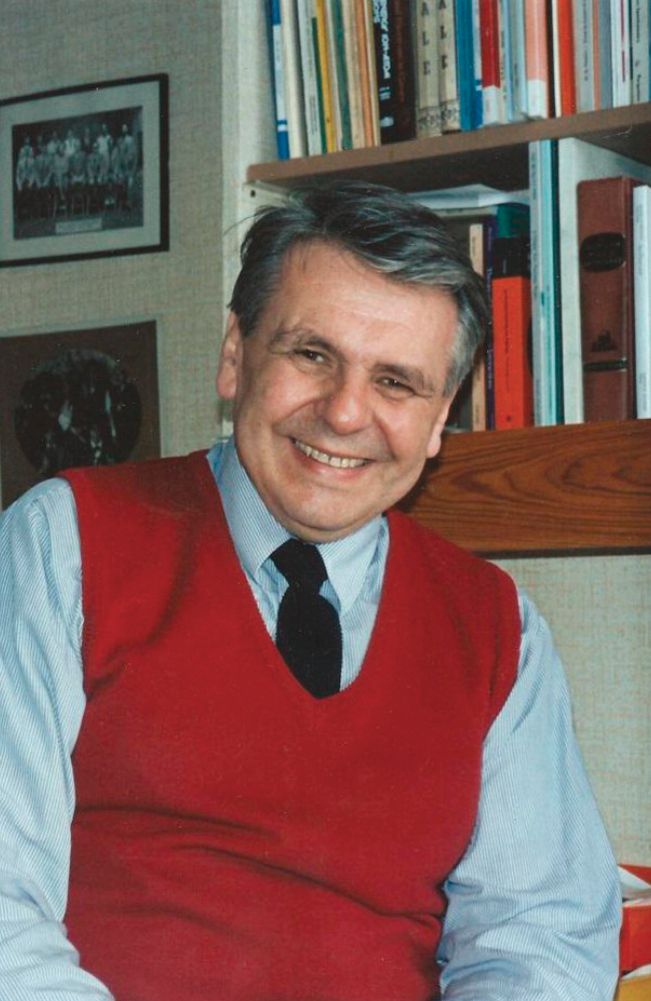Zdeněk Herman
DOI: 10.1063/PT.3.4820
In recent years physical chemist Zdeněk Herman, who died on 25 February 2021 in Prague, had been increasingly preoccupied with the startling opening of Charles Eliot’s book John Gilley of Baker’s Island: “To be absolutely forgotten in a few years is the common fate of mankind…. With the rarest exceptions, the death of each human individual is followed in a short time by complete oblivion, so far as living human memories are concerned.” Its message was among Zdeněk’s reasons for writing his so-far-unpublished memoir, which is about what, in his view, is memorable about others—and the network of relationships that bonded a community that grew out of a shared interest in chemical-reaction dynamics.

Zdeněk Herman
HERMAN FAMILY/PRAGUE

That community, of which Zdeněk was a cherished founding member, has been recorded not only in his prose but also in his countless drawings, made with the alacrity and accuracy of a master. His achievements as an artist—draftsman, painter, sculptor—compare to his scientific ones; indeed, the two are connected by his extraordinary dexterity, key to crafting and running fine scientific apparatus.
Born on 24 March 1934 in Libušín, Czechoslovakia, Zdeněk graduated from Prague’s Charles University in 1957 with a diploma in radiation chemistry. His adviser, František Běhounek, had a second career as an author of adventure and science fiction books. Zdeněk, a dedicated Boy Scout, had read them voraciously, and meeting his idol was a dream come true.
He then went to the Institute of Physical Chemistry of the Czechoslovak Academy of Sciences (a predecessor of the J. Heyrovský Institute of Physical Chemistry and Electrochemistry). There, Vladimír Čermák introduced Zdeněk to mass spectrometry and the physics and chemistry of ions. Zdeněk’s 1963 PhD thesis, done under Čermák, dealt with reactions of electronically excited ions in the ion source of a homemade mass spectrometer. The technique of studying ion–molecule reactions was inspired by Zdeněk’s serendipitous discovery of a facile hydronium ion formation in the ion source after he did something he was not supposed to do—increase the source pressure (as it put the filament in danger of burning).
Ion–molecule reactions would become the dominant theme of Zdeněk’s career. With a homemade multichannel jet as a molecular-beam source in his pocket, Zdeněk joined Richard Wolfgang at Yale University in 1964 to study the dynamics of ion–molecule reactions in crossed molecular beams under single-collision conditions. With several collaborators, Zdeněk and Wolfgang established the basic mechanisms of ion–molecule collisions and their dependence on the energy disposal. Zdeněk was in the US with his family in August 1968 when the Soviets invaded Czechoslovakia to crush the Prague Spring. Despite several offers his colleagues generated to keep Zdeněk in the US, the Hermans returned to Prague in 1969.
Throughout the 1970s, travel out of Czechoslovakia was severely restricted, and the small laboratory that Zdeněk shared with Čermák became a mecca for Western scientists traveling to Eastern Europe. More than 250 signatures of the world’s best-known atomic, molecular, and chemical physicists decorated the ceiling of the Čermák–Herman laboratory.
Following the Velvet Revolution in 1989, Zdeněk took part in reconstructing the scientific life of his country and quickly became overloaded with administrative responsibilities, among them codirecting the Heyrovský Institute and cofounding the country’s first research-grant agency. He also received a professorship at the Institute of Chemical Technology in Prague in 1996.
All that left little time for the laboratory, which, ironically, filled up with students anyway. Much of Zdeněk’s research in the 1990s concerned the dynamics of single-charge transfer from doubly charged ions. Later, his research interests moved to the dynamics of ion–surface interactions.
Over the years, Zdeněk became the heart and soul of the biennial European Conference on the Dynamics of Molecular Systems (MOLEC) meetings, for which he designed and made a beautiful chairman’s scepter. His key role was recognized in 2014 with the establishment of the Zdeněk Herman MOLEC Young Scientist Prize, for which he later designed its gold medals.
On his 80th birthday, his friends and colleagues established the Zdeněk Herman Jubilee Fund, which received more than 50 contributions. He used the fund to establish a prize for freshly minted Czech PhDs working in chemical physics and mass spectrometry.
For half a century, Zdeněk created drawings, paintings, and sculptures of friends and colleagues. In 2017 he published a 276-page book of his legendary art, noting, “In a way, it is a portrait of the generations of people that formed our years in science…. Perhaps this collection will keep the memory of not only their names, but also of their faces.” The three of us all appear in the book. One beautiful work absent from it is a 50-cm-high wooden sculpture of the Madonna, which Zdeněk gave one of us (Herschbach) and which brings back wonderful memories of Zdeněk.
The international physical chemistry and chemical physics community has lost a remarkably gifted scientist, brilliant artist, and revered friend, who has done much to make our science a convivial and congenial adventure.
More about the Authors
Dudley Herschbach. Harvard University, Cambridge, Massachusetts.
Peter Toennies. Max Planck Institute for Dynamics and Self-Organization, Göttingen, Germany.
Bretislav Friedrich. Fritz Haber Institute of the Max Planck Society, Berlin, Germany.




